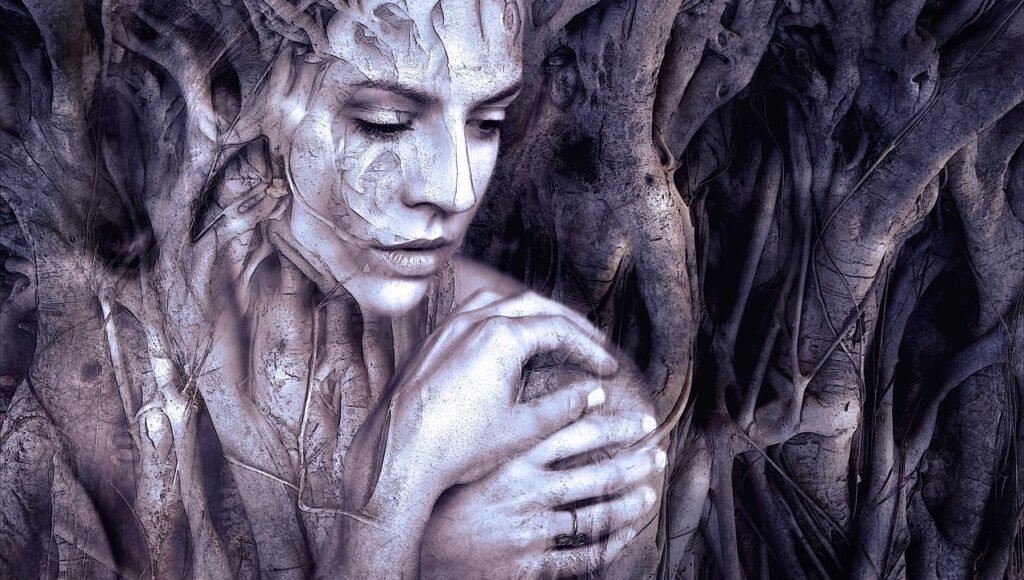A THING OF BEAUTY – John Keats
Table of Contents
Explanation

“A Thing of Beauty” is a poem by John Keats, an English Romantic poet. In this poem, Keats reflects on the enduring and uplifting power of beauty. He believes that beauty has the ability to bring joy and solace to people, and that it can even help to ease the pain of loss and suffering.
The first stanza of the poem describes how beauty is a “joy for ever,” meaning that it brings lasting happiness. Keats compares beauty to a “joyful butterfly,” which flits from flower to flower, spreading joy wherever it goes. He also compares beauty to a “joyful fountain,” which is a source of life and refreshment.
The second stanza of the poem describes how beauty can bring solace in times of sadness and loss. Keats writes that beauty is “a joy of the sky,” which means that it is something that is always present, even when other joys have faded away. He also writes that beauty is “a comfort of the earth,” meaning that it is something that can help to ease the pain of loss and suffering.
The third stanza of the poem describes how beauty can inspire people to create and appreciate art. Keats writes that beauty is “a spirit of the air,” which means that it is something that is intangible and elusive, yet always present. He also writes that beauty is “a vision of the mind,” which means that it is something that is created by the imagination and appreciated by the intellect.
The fourth stanza of the poem describes how beauty has the ability to bring people together and create a sense of unity. Keats writes that beauty is “a unity of the whole,” meaning that it is something that is all-encompassing and universal. He also writes that beauty is “a bond of the soul,” meaning that it has the power to connect people on a deep and meaningful level.
The fifth stanza of the poem describes how beauty is something that is enduring and timeless. Keats writes that beauty is “a pang of the heart,” meaning that it is something that is deeply felt and emotional. He also writes that beauty is “a dream of the past,” meaning that it has the ability to transport us back in time and evoke memories and emotions from the past.
The sixth stanza of the poem describes how beauty is something that is constantly changing and evolving. Keats writes that beauty is “a hope of the future,” meaning that it is something that inspires us to look towards the future with optimism and possibility. He also writes that beauty is “a grace of the present,” meaning that it is something that we can appreciate and enjoy in the present moment.
The seventh stanza of the poem describes how beauty has the ability to bring a sense of peace and calm to people. Keats writes that beauty is “a peace of the mind,” meaning that it is something that can bring tranquility and serenity to our thoughts and emotions. He also writes that beauty is “a balm of the soul,” meaning that it has the power to heal and soothe our inner selves.
The eighth stanza of the poem describes how beauty is something that can uplift and inspire people. Keats writes that beauty is “a rapture of the breast,” meaning that it is something that fills us with joy and exhilaration. He also writes that beauty is “a triumph of the will,” meaning that it has the ability to inspire us to overcome challenges and achieve our goals.
The final stanza of the poem describes how beauty is something that is timeless and universal. Keats writes that beauty is “a truth of the heart,” meaning that it is something that is deeply felt and understood. He also writes that
beauty is “a pledge of immortality,” meaning that it is something that endures beyond the boundaries of time and space.
In the final lines of the poem, Keats writes that beauty is something that is “joy’s handmaid,” meaning that it is something that helps to bring joy and happiness to people. He also writes that beauty is something that is “love’s reward,” meaning that it is something that is valued and appreciated by those who are in love. Overall, Keats’ poem celebrates the enduring and uplifting power of beauty, and the ways in which it can bring joy, solace, and inspiration to people’s lives.
A THING OF BEAUTY Imp Questions and Answers
List the things of beauty mentioned in the poem.
The things of beauty mentioned in the poem include the sun, the moon, trees, daffodils, clear rills, fair musk-rose blooms, and the “loveliness” of beauty itself.
List the things that cause suffering and pain.
The things that cause suffering and pain in the poem include despondence, “inhuman dearth of noble natures,” gloomy days, and “all the unhealthy and o’er-darkened ways.”
What does the line, ‘Therefore are we wreathing a flowery band to bind us to earth’ suggest to you?
The line “Therefore, on every morrow, are we wreathing a flowery band to bind us to the earth” suggests that people use beauty, represented by the flowery band, as a way to connect to and appreciate the earth, despite difficult and challenging times.
What makes human beings love life in spite of troubles and sufferings?
The poem suggests that the beauty of nature, as well as the beauty found in stories and legends, helps to inspire and motivate people, despite the troubles and sufferings they may experience.
Why is ‘grandeur’ associated with the ‘mighty dead’?
The grandeur associated with the mighty dead likely refers to the way that people remember and honor those who have passed, often through stories and legends that elevate their deeds and accomplishments.
What image does the poet use to describe the beautiful bounty of the earth?
The poet uses the image of the “mid forest brake, rich with a sprinkling of fair musk-rose blooms” to describe the beautiful bounty of the earth.
Do we experience things of beauty only for short moments or do they make a lasting impression on us?
The poem suggests that things of beauty make a lasting impression on us, as they are described as being eternal and never fading away.
